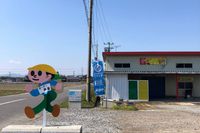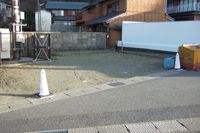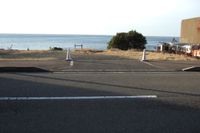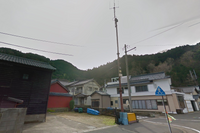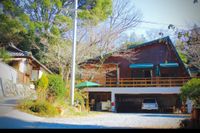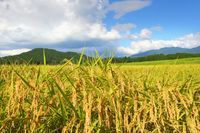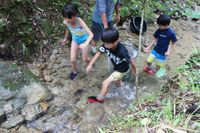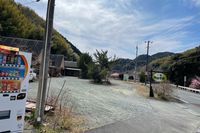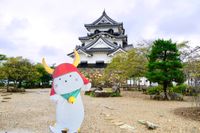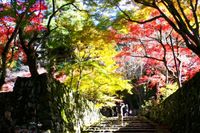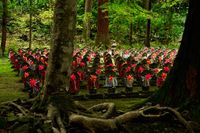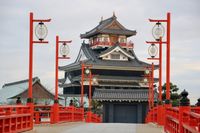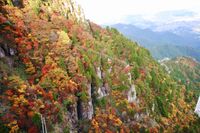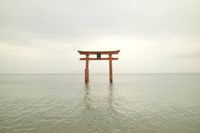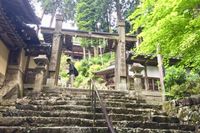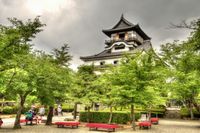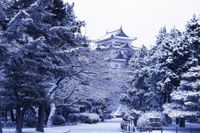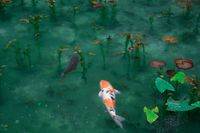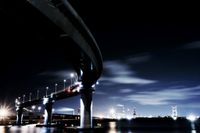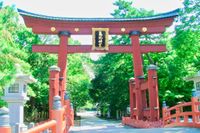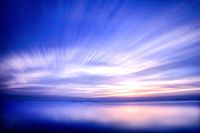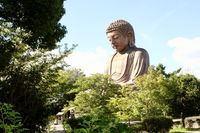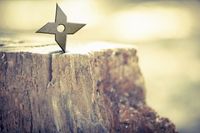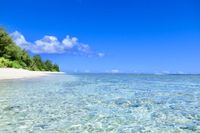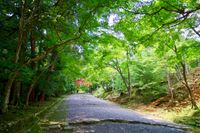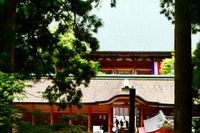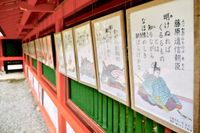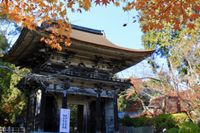Sekigahara Battlefield
岐阜県/不破郡関ケ原町

Description
Here we can witness historical traces of the "Battle of Sekigahara" which is said to be one of the greatest and fiercest battles in Japan's history after the political strife following the death of Toyotomi Hideyoshi in 1600. The East Army (Tokugawa Ieyasu, Tokugawa Hidetada, Yuki Hideyasu, Kuroda Nagamasa) and the West Army (Mori MototeruIshida MitsunariUkita HideieUesugi Kagekatsu) fought and Tokugawa Ieyasu ultimately obtained ultimate power. In 1603 he established the Edo Shogunate. There are numerous historical walking courses where visitors can see the battle paths and underground paths used.
Homepage
Address
Nearby Car Night Spots
Shin Meishin Suzuka PA (inbound) RV Station Suzuka * With Power!
¥2,200〜
/ per nightMie Yamamotocho, Suzuka-shi
4.3
(158)(Bonfire BBQ) Chita Mihama Noma Beach Station
¥3,500〜
/ per nightAichi Noma, Mihamacho, Chita County
4.7
(42)Nearby Activities
All you can eat rice balls and rice reaping in the rice field in the mountains
¥2,000〜
/ per personShiga Fujise, Taga-cho Inukami-gun
3.0
(0)Catch and eat char in a beautiful valley in the mountains
¥2,000〜
/ per personShiga Fujise, Taga-cho Inukami-gun
3.0
(0)Ranking Stations
Vanlife BASE | 45 min. from Narita Airport / Perfect for campervan travel/A seaside town rich in nature/Japanese countryside town/welcome traveler
¥7,000〜
/ per nightChiba Koseki, Kujukuri-machi, Sambu-gun
5.0
(64)Shin Meishin Suzuka PA (inbound) RV Station Suzuka * With Power!
¥2,200〜
/ per nightMie Yamamotocho, Suzuka-shi
4.3
(158)(Bonfire BBQ) Chita Mihama Noma Beach Station
¥3,500〜
/ per nightAichi Noma, Mihamacho, Chita County
4.7
(42)Nearby Drive Spots
Hikone Castle
This is a castle that was built by Ii Naokatsu in 1622. It is famous as one of Japan's only 12 remaining castles, and is one of five that is designated as a national treasure. From the top of the tower, visitors can see magnificent views of Lake Biwa, There is also a moor boat that is still in use, from which Hikone Castle can be viewed, and whose views can be enjoyed along with the seasons.
Saimyoji Temple
A Tendai sect temple built by Sanshu in 834 AD. The primary object of worship is Yakushi Nyorai, and Minamoto Yoritomo is said to have come here to pray for war victory. Along with the temples Kongorinji Temple and Hyakusaiji Temple, it is one of the "Koutousanzan" destinations (east lake three mountains). It is also famous for autumn leaf viewing, attracting numerous visitors each year.
Kongorinji Temple
This is a Tendai sect temple built in 741 by Gyoki. The object of worship is Sho Kannon and after it became assigned as a holy place of Buddhist training by the Ennin Priest who practiced at Mount Hiei, it became the branch temple of Enryakuji Temple. It is famous for the countless Ksitigarbha (buddha that looks over children, travelers and the underworld) known as the "Thousand Jizou". As the main hall is separated from the main gate, it is thought that it escaped burning down from the attack of Oda Nobunaga.
Kiyosu Castle
This is a castle founded in 1405 by Shiba Yoshishige. It was widely known as the headquarters of Oda Nobunaga in 1555, and subsequently the Toyotomi and Tokugawa families became the castle owners, and it was used until 1613. The present castle tower reproduces the ornate Momoyama culture of the Azuchi-Momoyama period(1568-1600).
Mount Gozaisho
This is a mountain 1,212 meters in height, on the border between Mie and Shiga prefectures. In Spring there are the azalea and spring blossoms, summer brings the red dragonflies, autumn has its red, orange and yellow leaves, and winter brings frost covered trees. Tounaiheki is a famous rock climbing area in this mountain, and hiking can be enjoyed here during any of the four seasons. ※御在所岳 紅葉 © 菰野町 クリエイティブコモンズライセンス(表示4.0 国際)https://creativecommons.org/licenses/by/4.0/
Shirahige Shrine
This is a shrine that is said to have been built in 5 BC. The shrine God is known as Sarutahiko no Mikoto, with the red/orange Torii gates appearing to float in Lake Biwa, which is known as "Itsukushima Shrine of Omi". It is a particularly good photo spot for photographers. The Torii gates were originally on dry land, but it is said that due to the increasing water levels of the lake, the Torii gates ended up being in the lake area.
Ikiyasan Chomeiji Temple
This is a Tendai sect temple that was built in 619 AD under the instruction of Prince Shotoku. The objects of worship are Senju Kannon(1000 Armed), Juichimen Kannnon(11-faced) and Sho Kannon and is a hidden temple not normally well known. From the Lake Biwa coast up to the main temple hall there are about 800 steps, known as the "808 steps". The temple is said to bring long life as the pronunciation of the name "Choumei" which is the name of the temple, means "long life" in Japanese.
Inuyama Castle
This is a castle that was built in 1469 by Oda Nobuyasu (Oda Nobunaga's uncle). It is one of Japan's 12 famous castles, and one of 5 designated as a national treasure. One could say that it is representative of the history of the turbulent history of competition and battle between the nobles Oda Nobunaga, Toyotomi Hideyoshi and Tokugawa Ieyasu. Being situated on top of a small mountain, the views of the river are also quite something to behold.
Nagoya Castle
This castle was built by Tokugawa Ieyasu in 1609, one of Japan's three great castles. It was used as a residence of 17th generation of the Tokugawa family until the Meiji era(1868-1912). The Golden Shachihoko (a Japanese sea creature with the head of a tiger and body of a carp) became the symbol of Nagoya. The castle is known both as Golden Shachihoko Castle and Golden Castle.
Monet's Pond
This is a reservoir in Nezu Shrine, in Gifu. From 1999, various species of waterlily such as the pygmy lily and spatterdock lily were planted here, and koi carp, which were initially not available in the area, were brought over and bred in this area. Due to this series of events over time, the area ended up resembling the lily ponds illustrated by Claude Monet.
Yokkaichi Inaba Port Line
This is a new road that was opened on 1 April 2018 in Yokkaichi. There are various factories and oil plants along the road, creating a dramatic view. The night view has given it the name "Dragon road" and is quickly becoming popular among photographers. ※ドラゴンロード © Kenichi_Inagaki クリエイティブコモンズライセンス(表示4.0 国際)https://creativecommons.org/licenses/by/4.0/
Kehi Jingu Shrine
This is a shrine which was founded by the Empress Jingu in 199 AD. The shrine deity was enshrined by Izasawake no kami, Emperor Chuai, and Empress Jingu. Four companies named Yamato Takeru No Mikoto Emperor OjinToyotama-himeTakeshiuchi no Sukune are also enshrined here. It is an entrance from Hokuriku to Kinai, and since it is a key gateway to Korea and China, it was regarded as "Hokurikudo general guardianship" and was held in high importance. It also has one of the three largest Torii gates in Japan.
Lake Biwa
This is a lake with the largest reservoir capacity in Shiga prefecture. It is said that the lake formed from around 4,000,000 to 6,000,000 years ago and provided a water supply to those that lived in the area from the Jomon period. The name comes from the fact that the shape of the lake resembles a Japanese musical instrument known as the Biwa.
Shurakuen Garden Buddha
This Buddha statue became witness to the marriage of the Emperor Showa in 1927 by Yamada Saikichi. It is a statue of one of the great Buddhas known as Amida Nyorai, with a height of 19 meters, larger than Buddha statues in places like Kamakura and Nara. Inside the park there is a camping area and public bathing facilities.
Koga Ninja Village
This is a Koga Style Ninja Theme park that opened in 1983. Within the park, there is a Koga Ninja museum which houses the largest number of Ninja tools and exhibits in the world, as well as the original residence of the famous Ninja known as Fujibayashi Yasutake, which was deconstructed and rebuilt as a Ninja trick house. There are other sporting Ninja experiences available such as Shuriken sword fighting and "Mizugumo" - crossing rivers on small raft like objects.
Mizushima Island
This is a small uninhabited island at the tip of Tsuruga Peninsula. The area is surrounded by shallow beaches and rock formations, and due to the beauty of the clear waters, it is known as the "Hawaii of Hokuriku". The island is only accessible during the 2 month period from Mid July until the end of August.
Hiyoshi Taisha Shrine
This is a shrine built in 91 BC. The western hall contains the main powerful God with the eastern hall contains the Mount Hiei guardian God. This is the main hub shrine of the 3,800 Hiyoshi, Hie and Sannno Shrines in Japan. There are numerous cultural items associated with monkeys, as they are considered as underlings to the shrine Gods. The area is also famous for autumn leaf viewing with around 3000 autumn leaf trees.
Mount Hiei Enryakuji Temple
This is a temple of Tendai that was founded by Saicho in 788 AD. It is also registered as a World Heritage Site. Along with Mount Koya Kongobuji Temple, it became the centre for Heian Buddhism and a place of training for figures such as Honen (founder of the Jodo sect), Shinran (founder of the Jodoshin sect), Eisai(Founder of the Rinzai sect), Dogen (founder of the Soto Sect), Nichiren (Founder of Nichiren Sect). Because of this it is also known as the "Mother Mountain of Japanese Buddhism" and sacred buddhist teachings still continue to this day.
Omi Jingu Shrine
This is a shrine built in 1940 to commemorate the 2600th year of the Emperor Jinmu, who was crowned in 660 BC. The temple God is known as Emperor Tenji, who made the trip from Asuka to Omi in 667 AD. After the Emperor Tenji wrote the Ogura Anthology of One Hundred Tanka‐poems by One Hundred Poets, it became a venue for playing Karuta (a variety of card games, normally played around new years). It is also the setting for the anime "Chihayafuru", and many fans of the anime make the pilgrimage here.
Nagarasan Onjoji Temple
This is a temple that was built in the 7th century under the instruction of Prince Yota. It is the head temple of the Tendai-jimon sect. From ancient times, battles and conflicts were waged with Hiei mountain Enryakuji Temple, and was confiscated by Toyotomi Hideyoshi. It is known as the "Phoenix Temple" due to overcoming numerous hardships and being rebuilt each time. Starting with the main hall, the temple contains 10 national treasures and 42 items of designated cultural importance.


